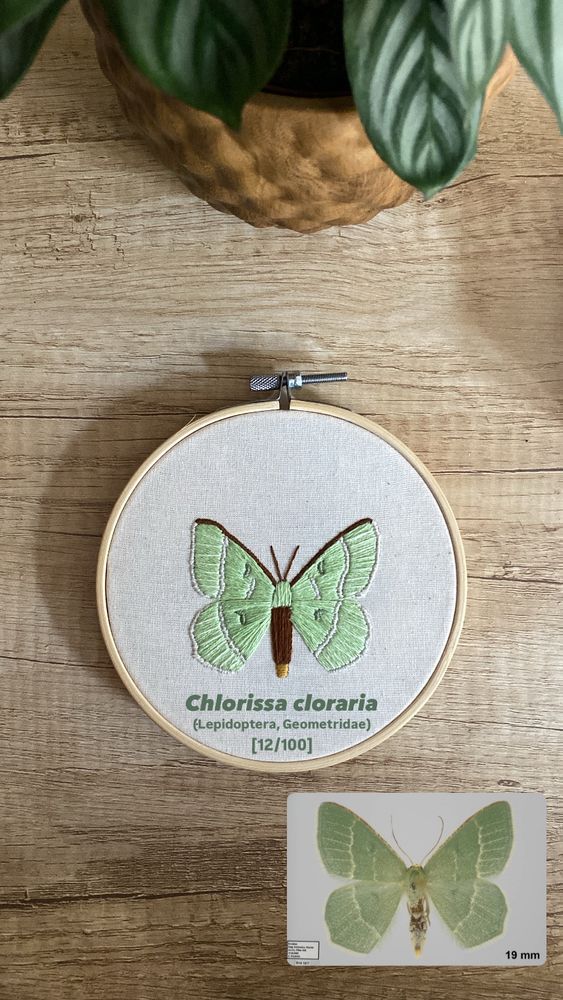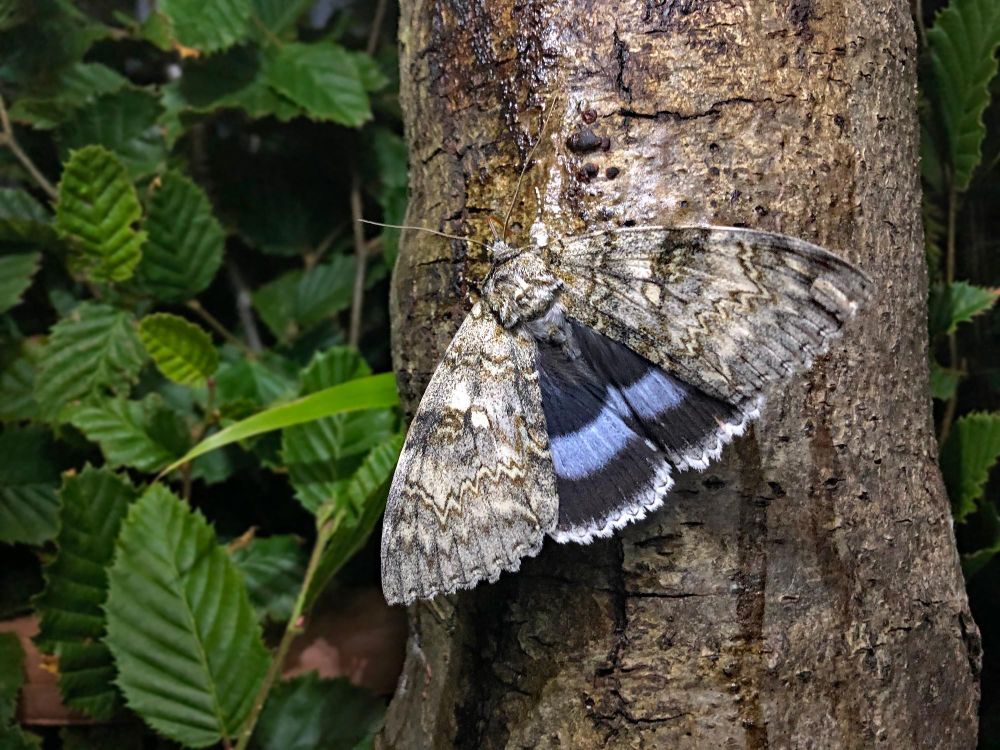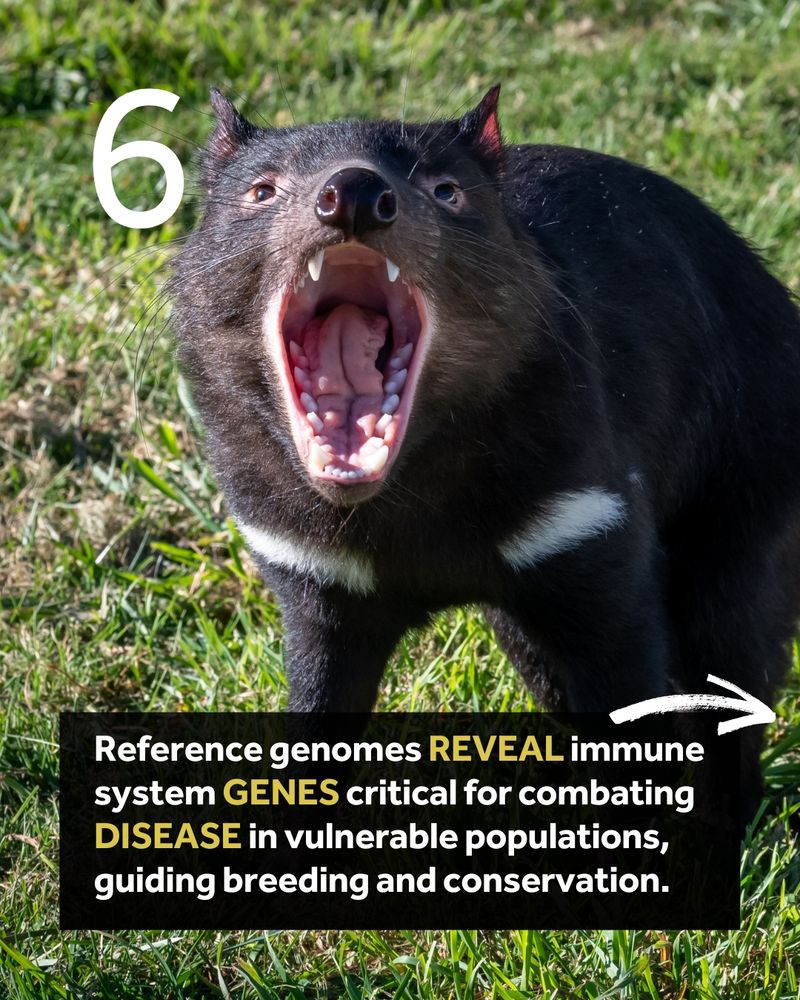
The quest to sequence the genomes of everything
@projectpsyche.bsky.social
@10klepgenomes.bsky.social
spectrum.ieee.org/whole-genome...
@projectpsyche.bsky.social
Sequencing the genomes of all 11,000 species of butterflies and moths across Europe. Find out more at projectpsyche.org

The quest to sequence the genomes of everything
@projectpsyche.bsky.social
@10klepgenomes.bsky.social
spectrum.ieee.org/whole-genome...
Great to see the @projectpsyche.bsky.social team flexing those science communication muscles!
@ebpgenome.bsky.social

Mónica Doblas and Laura Torrado, members of the Science Communications team, presenting a communication on Project Psyche and 10kLepGenomes during the XXI Iberian Congress of Entomology

Mónica Doblas and Laura Torrado, members of the Science Communications team, presenting a communication on Project Psyche and 10kLepGenomes during the XXI Iberian Congress of Entomology
Our Science Communications team has presented the initiatives of @projectpsyche.bsky.social and #10kLepGenomes at the XXI Iberian Congress of Entomology #CIEÁvila2025🦋
Congrats to @erebiologa.bsky.social and @entomoprofessor.bsky.social!
During our expedition to the Italian Alps with @10klepgenomes.bsky.social this summer, we had @spectrum.ieee.org representatives with us - and the first part of the article is out 🥳 Read more about the efforts of @projectpsyche.bsky.social ⬇️⬇️
04.10.2025 17:19 — 👍 8 🔁 1 💬 0 📌 0
Pável Matos-Maraví (STSM supervisor) and Marcin Wiorek (STSM researcher).

Marcin Wiorek inspecting the collection of Lepidoptera at the Biology Centre CAS (České Budějovice).
(1/2)🚀 New successful STSM of CA23122 – 10kLepGenomes!
@marcinwiorek.bsky.social (Institute of Systematics and Evolution of Animals Polish Academy of Sciences) joined @pavelmatosm.bsky.social for a 2-week collaboration at the Institute of Entomology - Biology Centre CAS (České Budějovice) 👇🏼
Researchers from our 🦏 Institute participate in an amazing project! 🦋
@projectpsyche.bsky.social
@10klepgenomes.bsky.social
@ebpgenome.bsky.social
@spectrum.ieee.org
👇👇👇
Project Psyche is featured in a new article out now on @spectrum.ieee.org! Check it out to get an insight into the efforts of @ebpgenome.bsky.social and the milestones achieved during the fieldtrip of #ProjectPsyche and @10klepgenomes.bsky.social to the Italian Alps 🦋
03.10.2025 12:08 — 👍 18 🔁 7 💬 0 📌 2Our social media managers, @erebiologa.bsky.social and @entomoprofessor.bsky.social, will be presenting #10kLepGenomes and @projectpsyche.bsky.social next week at the Iberian Congress of Entomology!
03.10.2025 11:43 — 👍 8 🔁 3 💬 0 📌 0
GBE | Polyommatine Blue Butterflies Reveal Unexpected Integrity of the W Sex Chromosome Amid Extensive Chromosomal Fragmentation Linked to Telomere Restoration
Hospodářská, @petrnguyen.bsky.social et al. investigated genome size and karyotype in Polyommatus and Lysandra butterflies, rejecting polyploidy to confirm karyotypic diversification via chromosome fragmentation in Polyommatinae butterflies.
🔗 doi.org/10.1093/gbe/evaf157
#genome #evolution
Congratulations to our webpage manager @marcinwiorek.bsky.social !
01.10.2025 16:52 — 👍 4 🔁 2 💬 0 📌 0
💚🦋 Moth of the day: Southern grass emerald 🦋💚 (12/100) #MothEmbroidery
#Chlorissacloraria #Geometridae #MothsMatter #MothsofAsturias
Join us at #Biodiversity25 !
Interested in Lepidoptera? There will be the session on @projectpsyche.bsky.social with project updates, the highly anticipated re-launch of Lepbase and discussions on the analysis of the first 1,000 lep genomes. Plus there's a keynote by @lepphylo.bsky.social!🦋

Celebrating the first 1,000 sequenced genomes on @projectpsyche.bsky.social 😎🧬🦋 #ProjectPsyche #MothStitching
21.09.2025 19:28 — 👍 31 🔁 8 💬 0 📌 0Great to be involved in this exciting endeavour !! @projectpsyche.bsky.social
18.09.2025 21:38 — 👍 3 🔁 1 💬 0 📌 0To celebrate the genomes for 1,000 (!) species of Lepidoptera in Europe, Project Psyche has released a preprint outlining our ambitions to jointly sequence & leverage genomes of all 11,000 species in Europe to propel science, conservation & society.
This was a joy to write together as a community!

A large grey moth with blue striped hindwings, resting on yellow leaves

A large grey moth with blue striped hindwings feeding on something sticky on a tree trunk

A long, beige caterpillar outstretched on a log
Big, blue & beautiful 💙
The Clifden Nonpareil (Catocala fraxini), whose name means ‘beyond compare’, is our Species of the Month 👉 https://butterfly-conservation.org/news-and-blog/species-of-the-month-clifden-nonpareil
📷: Peter Maton, Andrew Cooper, Mark Parsons
#MothMonday #MothsMatter #TeamMoth
🥹🦋 1000 genomas de referencia para los Lepidoptera europeos 🦋🥹
13.09.2025 17:45 — 👍 15 🔁 4 💬 0 📌 0(6/6)📄 In our new whitepaper (EcoEvoRxiv) we discuss our aims to coordinate this collaborative analysis of Lepidoptera genomes, turning data into impact for science, conservation and society.
Now available at 👉 ecoevorxiv.org/repository/v...
#ProjectPsyche #Genomics

The potential of Psyche genomes to address evolutionary questions and impact society. A. Evolution of chromosome structure through fusions, fissions and inversions. B. 3D genome, chromosome territories. C. Compartments and topologically associated domains (TADs). D. Time-calibrated species phylogeny. E. Diversification rates over time of two lineages. F. Discordance between phylogenies (e.g. horizontal gene transfer, cobionts, mitochondria, hybridisation). G. Gene duplication, loss, transfer, and gain of new regulatory elements. H. Gene evolution/copy number variation in the context of a tree, and correlation with phenotypic traits. I. Gene expression across different conditions/states and association with phenotypic traits. J. Population size changes over time in three lineages. K. Tracking species range expansion or genetic connectivity across space. L. Correlates of genetic diversity with traits such as range size. M. Food security. Lepidoptera are an important source of food and protein which has potential for expansion facilitated by genomics. In addition, genomics aids tracking and management of species of Lepidoptera which are major agricultural pests. N. Discovery of new compounds for biotechnology. O. Integrating genomics with ecology and taxonomy will feed into knowledge dissemination to the public and influence policy P. Genetic comparisons between populations, informing conservation units and species re-introductions Q. Conservation case studies, Large Blue and Apollo butterflies
(5/6)The #ProjectPsyche community is also forming international teams to jointly use these genomes to:
🧬 Drive discovery with genome data.
🌍 Inform conservation strategies.
📌 Help tackle societal challenges.
Link Psyche: www.projectpsyche.org
![Sequencing the diversity of Lepidoptera found in Europe.
A. Comparison of the status of sequencing for Lepidoptera compared to the other orders within Arthropoda. Showing the ten orders with the highest numbers of chromosome-level genomes. Data derived from GoaT on 05.09.2025.
B. The tree shows family relationships between all families of Lepidoptera which have representatives in Europe. The tree structure is adapted from [54, 117]. The outer ring shows a stacked bar chart of the number of species sequenced (dark pink) out of the total number per family in Europe (light pink).
The figure was generated using iToL (https://itol.embl.de/). Representative species are shown alongside the phylogeny; Micropterix aruncella (Micropterigidae), Triodia sylvina (Hepialidae), Adela croesella (Adelidae), Tinea trinotella (Tineidae), Yponomeuta malinellus (Yponomeutidae), Notocelia
uddmanniana (Tortricidae), Apatura iris (Nymphalidae), Zygaena filipendulae (Zygaenidae),
Recurvaria leucatella (Gelechiidae), Blastobasis adustella (Blastobasidae), Parapoynx stratiotata (Crambidae), Thyatira batis (Drepanidae), Lymantria monacha (Erebidae).
C. Map of locations of sample collection hubs (yellow stars) and sequencing hubs (blue star).
Locations of member organisations that are part of the Project Psyche consortium are represented by red circles.](https://cdn.bsky.app/img/feed_thumbnail/plain/did:plc:eb4yuokm56wm7nu4lnyesv7g/bafkreiccgkkjxtibqtgkfmtgu6rdv7ylrsnd7xxvarcypcskqyglxdjpny@jpeg)
Sequencing the diversity of Lepidoptera found in Europe. A. Comparison of the status of sequencing for Lepidoptera compared to the other orders within Arthropoda. Showing the ten orders with the highest numbers of chromosome-level genomes. Data derived from GoaT on 05.09.2025. B. The tree shows family relationships between all families of Lepidoptera which have representatives in Europe. The tree structure is adapted from [54, 117]. The outer ring shows a stacked bar chart of the number of species sequenced (dark pink) out of the total number per family in Europe (light pink). The figure was generated using iToL (https://itol.embl.de/). Representative species are shown alongside the phylogeny; Micropterix aruncella (Micropterigidae), Triodia sylvina (Hepialidae), Adela croesella (Adelidae), Tinea trinotella (Tineidae), Yponomeuta malinellus (Yponomeutidae), Notocelia uddmanniana (Tortricidae), Apatura iris (Nymphalidae), Zygaena filipendulae (Zygaenidae), Recurvaria leucatella (Gelechiidae), Blastobasis adustella (Blastobasidae), Parapoynx stratiotata (Crambidae), Thyatira batis (Drepanidae), Lymantria monacha (Erebidae). C. Map of locations of sample collection hubs (yellow stars) and sequencing hubs (blue star). Locations of member organisations that are part of the Project Psyche consortium are represented by red circles.
(4/6)🚀 For #ProjectPsyche, this is just the beginning. This ambitious pan-European project involves:
🔹 184+ researchers
🔹 34 countries
The goal? To sequence all 11,000 European Lepidoptera species!
These chromosome-level genomes are openly available for anyone to use.

The Project Psyche workflow: From catching Lepidoptera to annotated reference genomes. A. Lepidoptera are caught with traps or nets and photographed in a standardised way. For most specimens the head is used for long-range (Hi-C) sequencing, the thorax for long-read (PacBio) sequencing and the abdomen for RNA sequencing. The wings are stored in glassine envelopes. B. PacBio reads are aligned against each other to reconstruct contiguous sequences (contigs) for each haplotype separately. Hi-C reads are used to identify the set of contigs belonging to the same haplotype. Because some regions are not sequenced well, e.g. repeat-rich regions, there are gaps between contigs. Hi-C reads are used to bridge those gaps and join contigs in the right order and orientation together into scaffolds. After manual curation, these scaffolds mostly represent entire chromosomes. C. Protein-coding genes in the genome are annotated using species-specific RNA sequencing (RNA-seq) data and protein homology evidence. Standardised resources will also be generated for each genome, including variant calls, annotation of sequence features such as transposable elements, and 5mC methylation calls obtained from PacBio data. These annotations will all be available in LepBase.
(3/6) Achieving the 1,000-genome milestone was made possible by collaborative projects including:
🔹 Darwin Tree of Life (DToL)
🔹 Project Psyche
🔹 European Reference Genome Atlas (ERGA)
Roughly half of the genomes came from DToL & half from Psyche.

Photo of Stenoptilia islandicus by Marko Mutanen
(2/6)This pretty moth was collected by Marko Mutanen and Niina Kiljunen from the slopes of a fell in Enontekiö, Finland.
Fun facts about this species:
🌱 Larvae feed on mossy saxifrage
🦋 Adults have feathery wings held at right angles.

Genome sequencing progress for Lepidoptera. Stacked bar charts represent the cumulative number of lepidopteran species with a reference genome per year. The colours represent the different levels of genome assembly quality, ranging from contig to chromosome-level. Numbers in brackets represent the range in numbers of species that have a given assembly level per year. Data derived from GoaT on 05.09.2025.
(1/6) 🦋 We are thrilled to announce the release of the 1,000th reference genome of Lepidoptera species found in Europe!
This goal was reached with the release of Stenoptilia islandicus, also known as the mountain plume moth.
Read the story below!👇🏽


At every turn, EBP-affiliates are pushing boundaries—on track for 10,000 genome assemblies!
@bat1kgenomes.bsky.social @kurakulabmsm.bsky.social
@atlasea.bsky.social @biogeneurope.bsky.social
@ergabiodiv.bsky.social @vertebrategenomes.bsky.social
@projectpsyche.bsky.social
Most species of butterfly and moth have 31 highly conserved chromosomes. However, bursts of karyotypic diversity have occurred in some groups due to high rates of chromosome fission and/or fusion.
Why certain species undergo these bursts of chromosome rearrangement is unknown.

Photo of Project Psyche members at a fieldwork trip in Tyrol, Italy.
Do the same features and patterns underlie other instances of rapid chromosomal change?
High-quality genomes by @ebpgenome.bsky.social across eukaryotes will allow us to explore this. In particular, @projectpsyche.bsky.social is sequencing all species of Lepidoptera in Europe. Exciting times ahead!

Picture of the 19 attendees of the WG1 in front of the Senckenberg German Entomological Institute in Müncheberg, Germany.
Today kicks off the first meeting organised by WG1 at the Senckenberg German Entomological Institute in Müncheberg, Germany 🦋
From Sept. 10th-12th, 19 participants will discuss how to connect with key stakeholders who may benefit from Lepidoptera genomes
Stay tuned for updates!
#COST10KLepGenomes

Picture of the Senckenberg Entomological Institute (Müncheberg, Germany)
(1/3) 🌍🦋 From 10–12 Sept 2025, WG1 of #10kLepGenomes will host a workshop to discuss the bridge between Lepidoptera genomics and society. Experts in genomics, conservation and applied sciences will gather at the Senckenberg Entomological Institute (Müncheberg, Germany) 👇🏽
09.09.2025 13:37 — 👍 3 🔁 1 💬 1 📌 1

Thanks to our whole EBP community for making this milestone possible.
| @bat1kgenomes.bsky.social |
@kurakulabmsm.bsky.social | @atlasea.bsky.social | @biogeneurope.bsky.social | @ergabiodiv.bsky.social | @vertebrategenomes.bsky.social | @invertebrates.bsky.social | @projectpsyche.bsky.social |
Good memories of fieldwork collecting butterflies and moths for @projectpsyche.bsky.social in Italy with lepidopterists from across Europe. We identified, dissected and preserved them onsite for optimal conditions to sequence reference genomes. In a few weeks we will reach 1000 genomes!
02.09.2025 10:58 — 👍 12 🔁 2 💬 0 📌 0